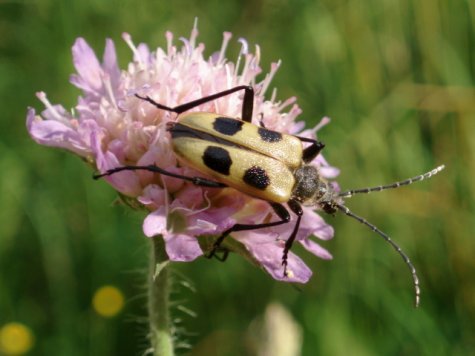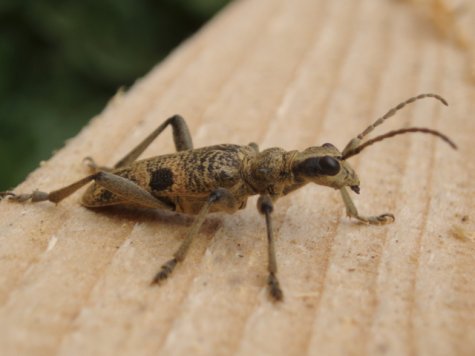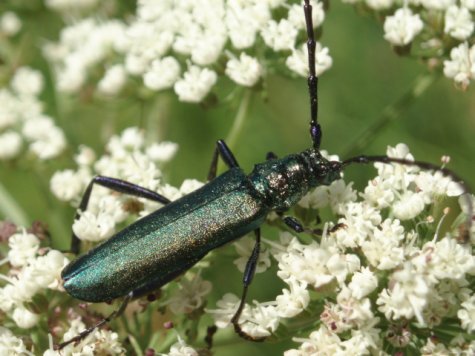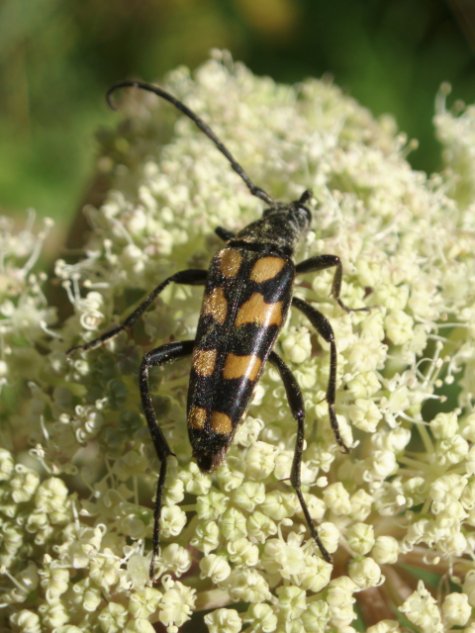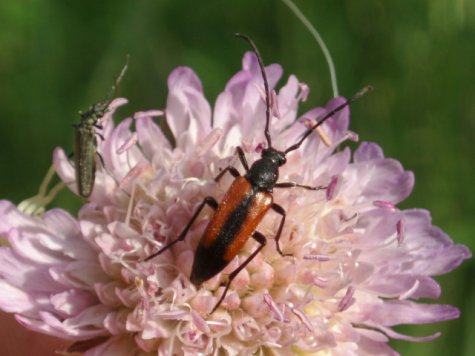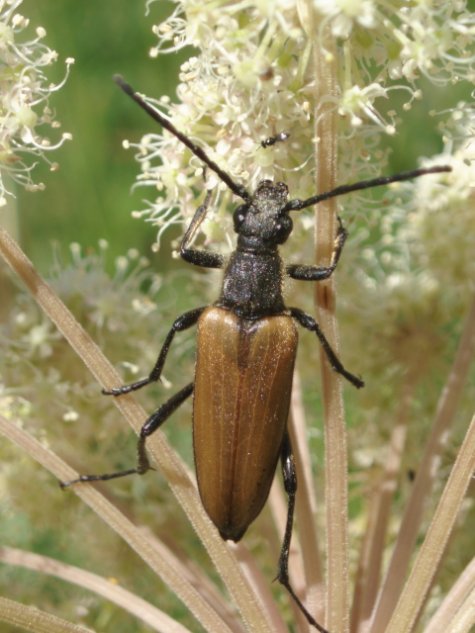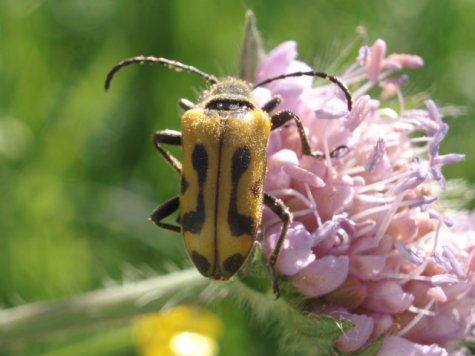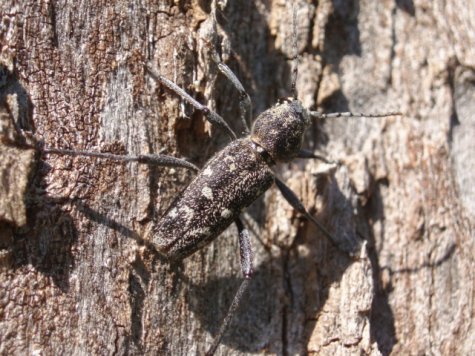These longhorn beetles are forest menaces
Text and photos Ave Liivamägi
Translation: Liis
Longhorn beetles Siklased Cerambycidae
Longhorn beetles are beetles with a narrow body and long antennae. Many longhorn beetles have colourful outer or cover wings (elytra), others have a tree bark coloured pattern. The imagos or fully developed insects we meet in summer on the flowers and leaves of plants and on tree trunks. The larvae of longhorn beetles develop in wood. Because wood is poor in nutrients the development may last several years. As a result some longhorn beetles are forest pests. Longhorn beetle species prefer one or some specific kinds of trees.
- Tuisusikk Pachyta quadrimaculata
Both elytra with two black dots. Caterpillars in dead spruce or broadleaf wood.
Black-spotted pliers support beetle Lehtpuu-kooresikk Rhagium mordax
Elytra yellowish grey, with two brownish yellow cross bandsthat are separated on the sides by a large black patch. Larvae under the bark of dead broadleaf tree trunks and stumps
.
Musk beetle Muskussikk Aromia moschata
Gleaming green. With strong specific smell. Larvae in old willows.
Four-banded longhorn beetle Harilik kiitsaksikk Leptura quadrifasciata
Elytra banded in black and yellow. Larvae in broadleaf trees.
-- Väike-kiitsaksikk Leptura melanura
Elytra of female red, tip and seam black. Larvae on coniferous as well as broadleaf trees.
-- Suur-õiesikk Anoplodera rubra
Elytra of male ochre yellow. Larvae on coniferous trees.
The Brachyta interrogationis and the aspen zebra beetle are no longer to be seen in nature this year.
-- Viiulsikk Brachyta interrogationis
On the outer edge of both elytra three black dots and on the back a curved black lengthwise band. Larvae in old pine or birch wood.
Aspen zebra beetle Haava-kirisikk Xylotrechus rusticus
On the grey elytra 2-3 ciurved lighter cross bands. Larvae on aspen.
Translator's note: Accepted common names in English are lacking or not easy to find for several of the longhorn beetle species above

